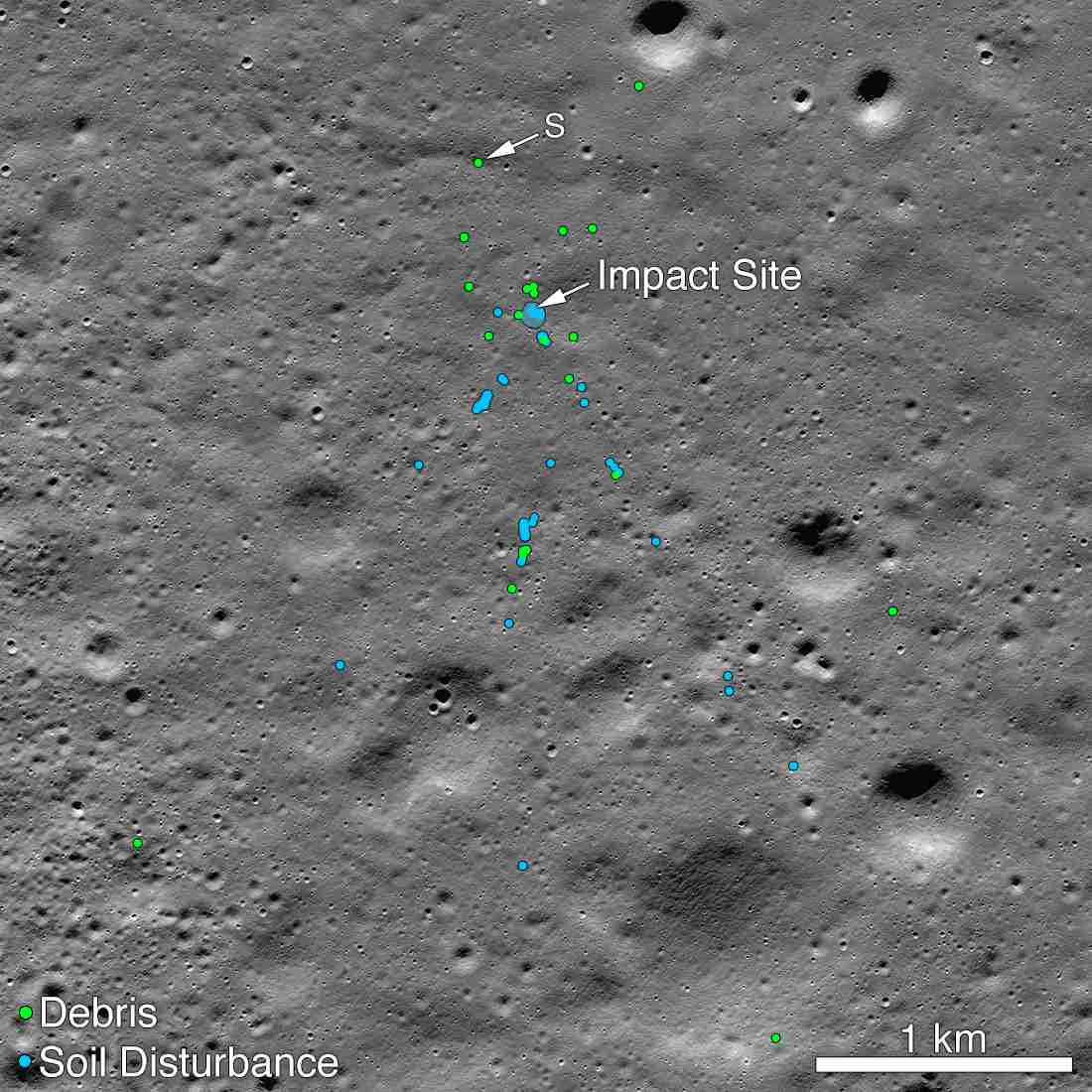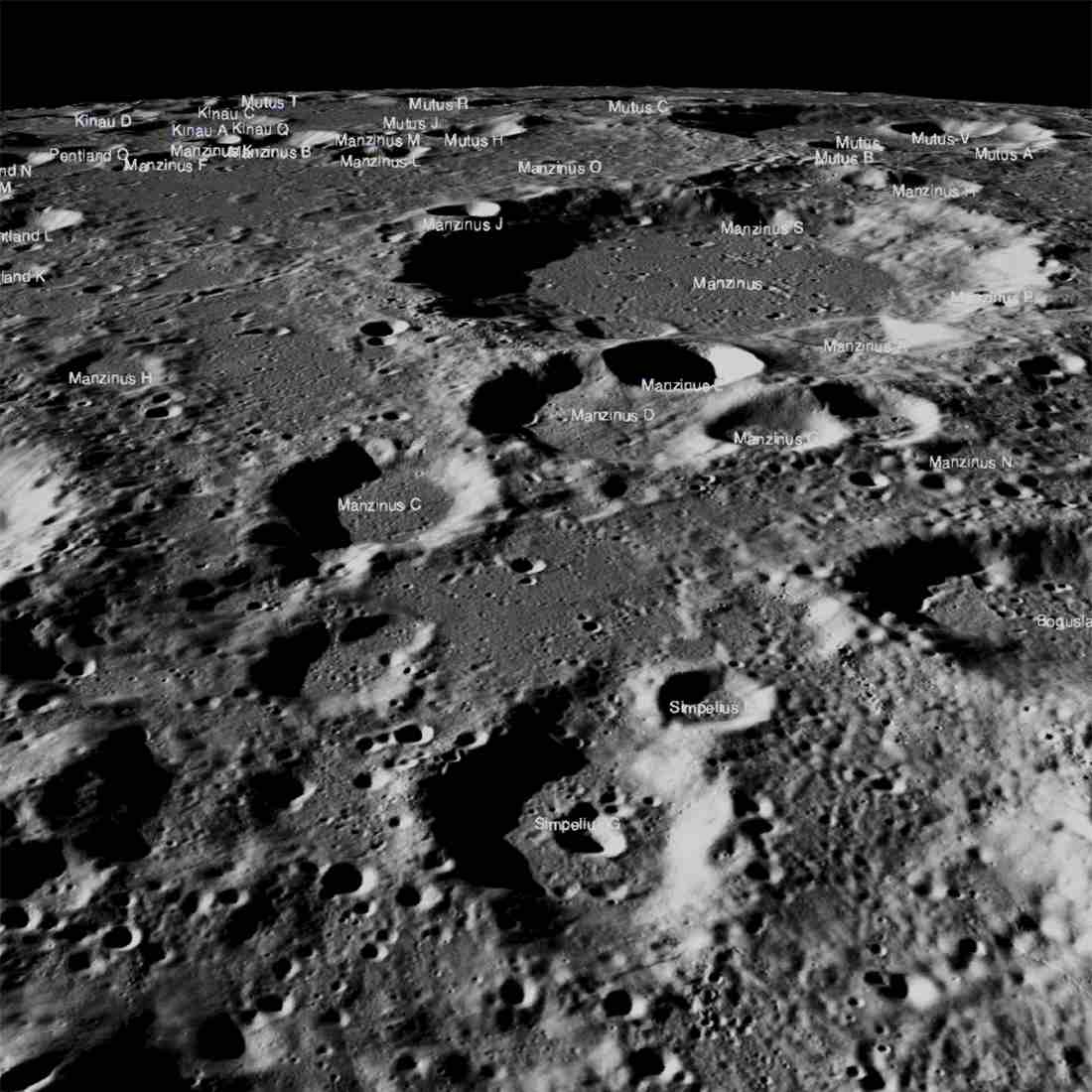On Nov. 19, Mark S. Robinson opened an email with the subject line, “Vikram Lander’s final resting place (Images with Proof).” Robinson is the principal investigator for the sharp-eyed camera aboard Lunar Reconnaissance Orbiter, a NASA spacecraft that has been mapping the moon for a decade, and he had received a lot of these emails since an Indian robotic spacecraft disappeared in September as it attempted to land on the moon. But this one turned out to be the crucial clue in finding the missing lander, and Monday **NASA announced the location of the crash site** , with photographs showing the scar on the moonscape. [caption id=“attachment_7730521” align=“alignnone” width=“1100”]  Vikram lander’s ejecta as seen be LRO’s camera. Image: NASA[/caption] The accomplishment was a triumph of crowdsourcing in modern space research and pointed to the value of NASA’s openness with its data and operations. Most of the data from U.S. civilian space missions is freely available to both academics and curious amateurs, who were able to scour pictures from a NASA orbiter for signs of the Indian spacecraft. By contrast, the Indian Space Research Organization, or ISRO, the agency that runs India’s space program, has been parsimonious in revealing what it knew about the fate of Vikram, which was part of Chandrayaan-2, a mission that launched in July. An accompanying orbiter continues to operate around the moon. If Vikram had successfully made it to the surface, India would have become only the fourth nation to accomplish that feat. But as it descended, something went awry about 1 mile above the surface. Vikram shifted off course, then went quiet. A day later, the Indian space agency posted on its website that it had already found the lander: “Vikram lander has been located by the orbiter of Chandrayaan-2, but no communication with it yet.” This week, K. Sivan, ISRO’s director, dismissed the NASA announcement, repeating the claim that Vikram’s location had been identified back in September. However, the Indian space agency never released images or other data to corroborate the statement, nor did it share the coordinates of where Vikram supposedly sat on the moon’s surface. Only last month did the Indian government admit failure. Thus, NASA and others looked for Vikram without ISRO’s help. [caption id=“attachment_7411671” align=“alignnone” width=“1100”]  The scene above was captured from an LROC Quickmap fly-around of the site. The image width is about 150 kilometers across the center. Image: NASA/GSFC/Arizona State University[/caption] The Lunar Reconnaissance Orbiter, which has been methodically mapping the lunar surface for a decade, happened to pass over the Vikram landing site 10 days after its crash. Robinson and other camera scientists examined the images, but there were no obvious signs of Vikram. The high-resolution images encompassed about 1 billion pixels, and the small lander, if it were not hidden in the shadows, would be only a few pixels wide. “There was a huge search area,” said Robinson, a professor of Earth and space exploration at Arizona State University. “There were five or six people who pitched in and spent a day.” They then returned to their more scientific tasks. “It was interesting to do,” Robinson said. “There wasn’t a lot of scientific value in it.” The orbiter made additional flyovers of the site Oct. 14, Oct. 15 and Nov. 11, adding more pictures to analyze. The direction the spacecraft was pointing during the Nov. 11 flyover provided better lighting and sharper resolution in the images. Amateur enthusiasts continued to examine the NASA images, and many claims of Vikram sightings landed in Robinson’s inbox. For most, a quick before-and-after comparison with older photographs showed that the purported impact crater was already a feature of the lunar surface. While NASA’s openness has enabled many more eyes to look over the scientific data, the space agency, with the management of its missions spread around the country, is not always diligent in following up on tips. The November email came from Shanmuga Subramanian, a computer programmer and mechanical engineer living in the south Indian city of Chennai, who had already tried for a month to tell NASA what he thought he had found. On Oct. 3, Shanmuga posted on Twitter a tiny white speck that was not visible in an older image, which he said he thought could be Vikram.
Is this Vikram lander? (1 km from the landing spot) Lander might have been buried in Lunar sand? @LRO_NASA @NASA @isro #Chandrayaan2 #vikramlanderfound #VikramLander pic.twitter.com/FTj9G6au9x
— Shan (Shanmuga Subramanian) (@Ramanean) October 3, 2019
Two weeks later, he emailed Noah E. Petro, project scientist for the Lunar Reconnaissance Orbiter. Five days later he followed up with Petro and John W. Keller, the deputy project scientist. But it was only on the third email that he added Robinson, who forwarded the email to other scientists on the camera team, and they quickly found the crash site. First, they confirmed that the speck Shanmuga identified was not there before September but was also visible in the October and November flybys. That ruled out the possibility that the speck was unlucky camera noise. They then found changes in the brightness of nearby soil caused by bits of the moon flying upward and outward after the impact. The pattern looked like a splash of water and pointed to where Vikram had slammed into the moon, about 2,500 feet to the southeast of the speck Shanmuga had seen. The speck turned out to be a piece of Vikram thrown out by the impact, and the scientists spotted other bits of wreckage.
@NASA has credited me for finding Vikram Lander on Moon's surface#VikramLander #Chandrayaan2@timesofindia @TimesNow @NDTV pic.twitter.com/2LLWq5UFq9
— Shan (Shanmuga Subramanian) (@Ramanean) December 2, 2019
“The debris is spread out over a wide area,” Robinson said. While Indian authorities had initially suggested that the spacecraft could still be operational after a harder-than-designed landing, the images showed Vikram had disintegrated. “It wasn’t a hard landing,” Robinson said. “It was a crash.” Robinson said it took a few days to carefully check the analysis before he informed Petro and Keller, who in turn told agency officials before Thanksgiving. [caption id="" align=“alignnone” width=“1100”] Before and after images show the Vikram impact point. Changes to the surface are subtle and are more easily seen in these images than earlier ones. Image: NASA/LRO[/caption] A NASA spokesman said that the release of the findings was coordinated with the Indian space agency. But the spokesman said ISRO did not share with NASA the coordinates of where it thought Vikram had ended up. ISRO did not respond to questions about the claim that the Chandrayaan-2 orbiter had already located the lander in September. Vikram’s inadvertent strike of the moon reveals properties of the soil in the area that scientists would not have seen otherwise. At the impact point, the surface became darker. That material is not itself necessarily darker, but rather chunkier and thus casting more shadows, making it appear darker. “That tells something about the cratering mechanics,” Robinson said. Farther away, lighter-coloured material emanates outward. The lighter streaks are not a coating of material thrown out by the impact, but rather, the surface was smoothed out, making it more reflective and brighter, Robinson said. Seeing that could aid future studies of the moon’s surface. Kenneth Chang c.2019 The New York Times Company


)
)
)
)
)
)
)
)
)



